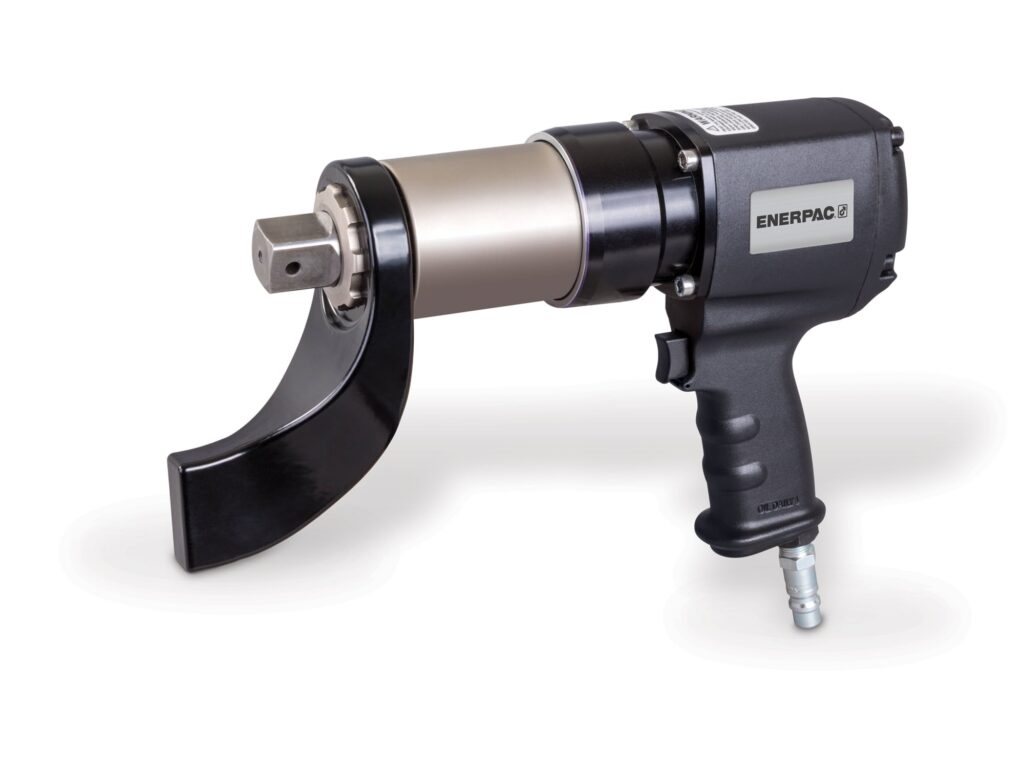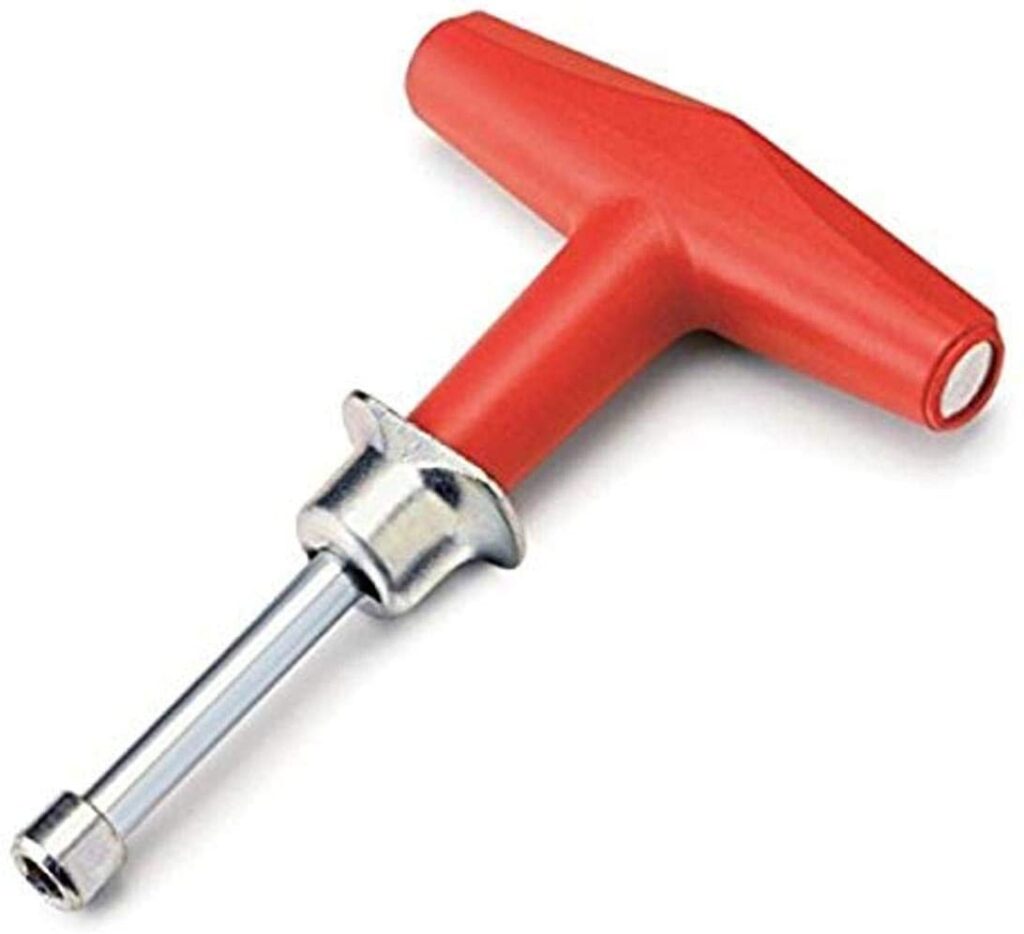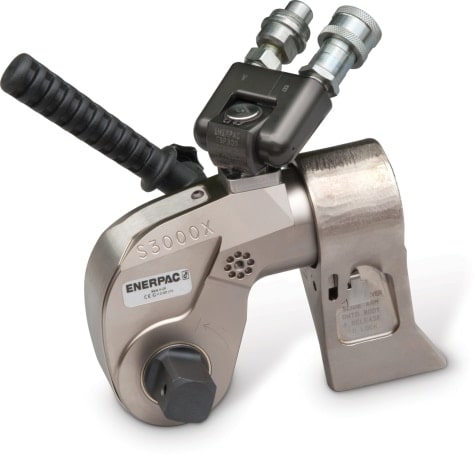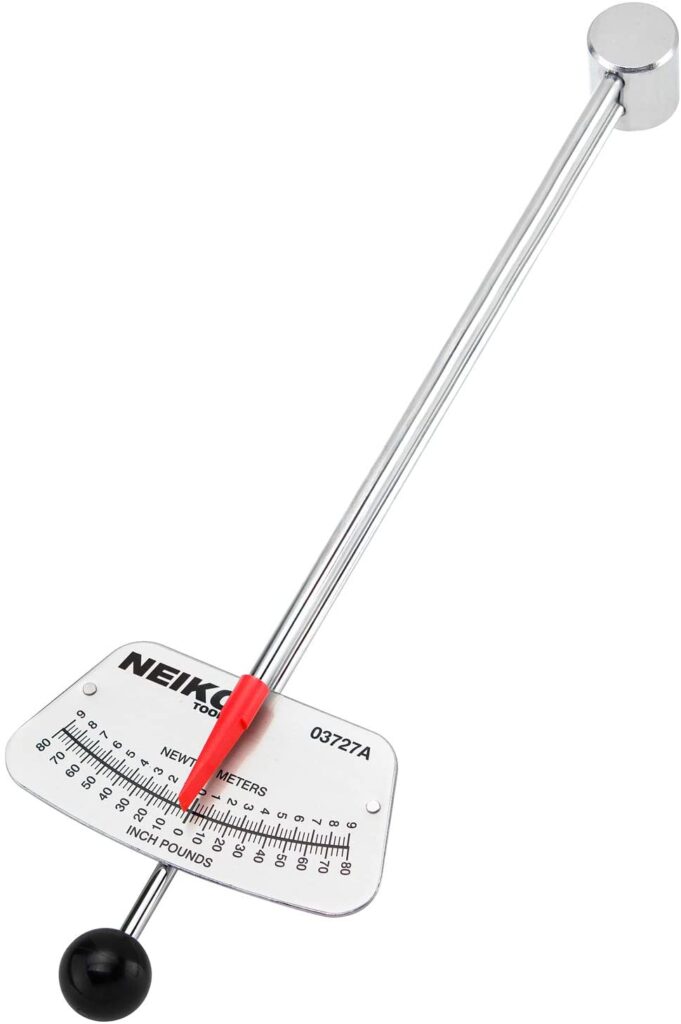There are many types of torque wrenches available. Depending on your application and needs one torque wrench would be more ideal than another. In this article, we talk about 5 types of torque wrenches.
1.Click Torque Wrench
Click torque wrenches are the most commonly used torque wrenches today. They are very economical and easy to use. This torque wrench works by adjusting your torque to a specified value. This will adjust a spring, when a torque with a greater value has applied a ball in a detent will “click” out causing an audible sound and minor impulse feeling.
This indicates the set torque value has been achieved. You can continue applying more torque but the torque wrench will not “click” anymore since the set torque is already achieved.
Click torque wrenches are length dependant and it is critical proper hand placement and direction of force is applied or your torque value will be off.

2.Pneumatic Torque Wrench
A pneumatic torque wrench is used when a large amount of torque is required. The pneumatic torque wrench is connected to an FRL (Filter, Regulator, Lubricator), and the air supply is connected to the inlet of the FRL. The air regulator is adjusted with a calibration sheet to set a torque value.
A pneumatic torque wrench has a gearbox and does not tighten a fastener like an impact hammer would, when the set torque is achieved there will be no more movement on the socket.
A pneumatic torque wrench incorporates a reaction arm, this is to keep it stationary and the operator should be careful because it is a pinch hazard. Some manufactures make pneumatic torque wrenches up to 6000ft. lbs

3.No-hub Torque Wrench
A No-hub torque wrench is a specialized tool for tightening No Hub Cast-Iron Soil Pipe Couplings. These torque wrenches are built to preset torque values, they come in T-shape handles and are easy to use. They will secure a coupling adequately without damaging it.

4. Hydraulic Torque Wrench
When assembling heavy machinery or aviation equipment that requires large amounts of torque, a hydraulic torque wrench is ideal. It is a specialized tool that uses a hydraulic pump to create large amounts of torque. Adjusting the oil pressure at the hydraulic tank with a calibration sheet will give you different torque values.
A hydraulic torque wrench also uses a reaction arm, the user must be aware of the pinch hazard. There are low clearance wrenches that use a reaction pad. The operator should make sure the reaction pad is rested on a flat of an adjacent nut is common practice. There are also square drive wrenches that use reaction arms.

5. Beam Torque Wrench
Beam torque wrench is the simplest type of torque wrench. It has two beams where one is used to applying torque and the other beam is used as an indication for a scale.
The design of a beam torque wrench is as simple as it gets. This torque wrench was developed around the late 1920s and can still be found used today.
They have a flaw when it comes to reading it though, depending on the angle you look at the scale you can read a different torque value than what is actually being applied.






